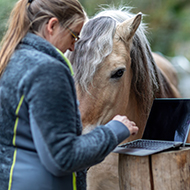Adder distribution in Scotland reduced, study finds
Adders are considered 'Near Threatened' in Scotland.
The latest Scottish Adder Survey has reported a significant reduction of adder distribution in the country since 1994.
The study found that the amount of ten-kilometre squares where adders had been reported in Scotland had reduced by 36 per cent.
In 1994, when the last Scottish Adder Survey was conducted, researchers found adders in 567 ten-kilometre square research sites. The post-1994 statistics report adders in just 364 research sites.
Questionnaires have also raised the perception that adders are becoming less common.
Despite the reduction in distribution, researchers did find the overall range of adders to be similar to findings gathered in 1994. A large proportion of native snakes were reported in the upland regions of Scotland, between Glasgow and Inverness. They remained absent from the Central Valley, Outer Hebrides and Northern Isles.
The latest study was a partnership between NatureScot, Amphibian and Reptile Conservation, and Amphibian and Reptile Groups of the UK.
The 2024 study was designed to repeat the work performed in 1994. Researchers used similar methods, conducting a questionnaire and a re-survey of the original study sites.
This data was combined with historical records collected by several other sources.
Adders are currently considered 'Near Threatened' in Scotland, Wales and Britain as a whole and 'Vulnerable' in England by the Great Britain IUCN Red List Assessment. They are Scotland's only native snake and is the only venomous snake in Britain.
The decline in adder distribution has previously been linked with various pressures, such as habitat loss, disturbance, and a lack of conservation management.
Catherine Whatley, NatureScot's Amphibians and Reptiles Advisor, said: “Reptiles are a challenging species to study in Scotland, due to their low detectability combined with how vast and remote Scotland can be, so we haven’t been able to draw robust conclusions about changes in the adder population size. The evidence we have gathered points to a picture of decline, with the contraction in adder distribution quite alarming.
“We’re very grateful to all the people who took part in the Scottish Adder Survey, from the surveys and questionnaire participants to everyone who has submitted adder records in Scotland.”
Image © Shutterstock



 With Strangles Awareness Week just around the corner (5-11 May), vets are being encouraged to share a survey about the disease with their horse-owning clients.
With Strangles Awareness Week just around the corner (5-11 May), vets are being encouraged to share a survey about the disease with their horse-owning clients.